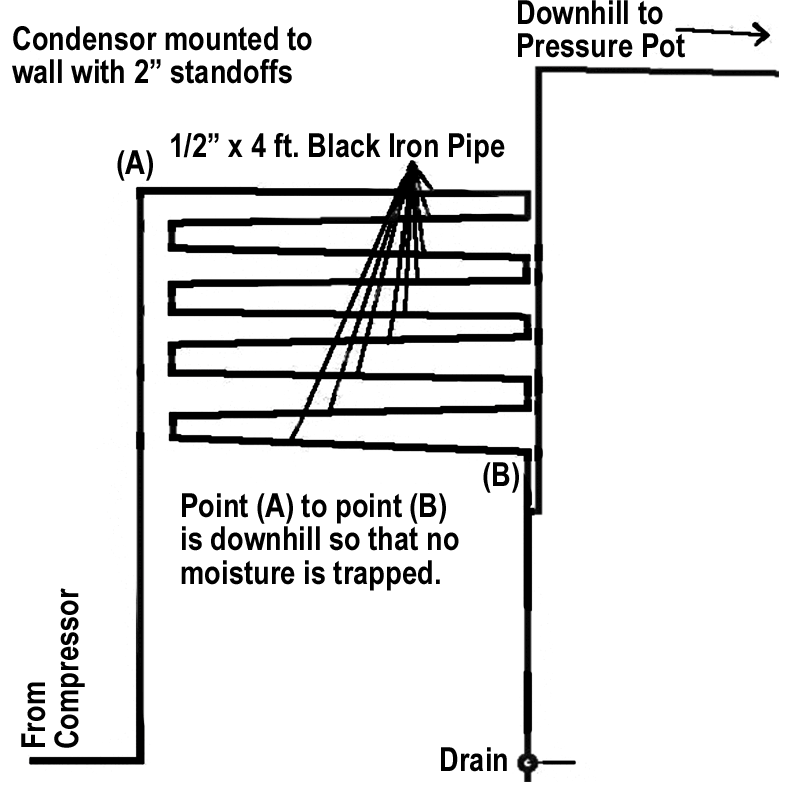Piping From Compressor To Pressure PotAuthor: Tom Eddleman Posted: Revised: August 03, 2005 Water is a liquid that cannot be compressed. Air on the other hand that has water vapor in it can be compressed. When a compressor takes the ambient air in and compresses it all of the water in that air goes into the tank along with that air. In the case of a compressor with an 80 gallon tank with a cutoff pressure of 175 PSI that amounts to about 12 Ė 80 gallon tanks of air at ambient pressure with all the moisture that was in it. Itís important to remember Boyleís Law (Gases heat as theyíre compressed and cool as the pressure is released). As these 12 tanks of air are compressed into one tank they get hot and because of that the water molecules are also heated and are still in the air as vapor. If the compressor tank is left to cool at this point a lot of the vapor will condense and fall to the bottom as water. (Actually it will be a mixture of water and oil from the compressor). This is a good thing as all we have to do with this water is drain it off. Even if the compressor tank at this point is at room temperature it still has water vapor in the compressed air. This is the water that will get all our media in the pressure pot wet if we donít deal with it. When the air, with the moisture in it, leaves the tank going to the pressure pot it expands. When this happens it cools. Because of the cooling the moisture condenses once again and collects in the piping to the pressure pot. For moisture free blasting this has to be eliminated. There are a number of ways to eliminate the moisture in a system. The most common is the way in which itís piped. If you use metal pipe to plumb your system it will act similar to a Whiskey still in that it will cool the gas so the vapor falls out of it. The longer the run of metal pipe the better. Secondly is a moisture trap. It does what the name implies. It traps the moisture, collecting it for elimination by draining. A coalescing filter can be added to further eliminate moisture and a desiccant filter could also be used. Large companies that use a lot of air often use a refrigerated extractor that cools the air to right above freezing. That brings the dew point down to the point that almost all of the moisture is extracted. Depending on how dry you want your air and how much youíre willing to spend determines which route to go. On my system I use black iron plumbing pipe to make a condenser coming off the compressor. From there it goes to the ceiling and then heads slightly downhill to the blast area. After going through a stand pipe for elimination it goes to a water separator filter on the pressure pot. Because I only need to drain the water/ separator about once a week I know that Iím not getting very much moisture at that point. If you have to drain that separator a lot maybe your piping could be better.
The drawing above shows the condenser that I use; the link below is to a web site that shows a piping diagram. An easier condenser to construct would be to simply coil ĹĒ copper tubing back and forth. I had some black iron pipe so thatís what I used. http://www.tptools.com/statictext/airline-piping-diagram.pdf is an Adobe Acrobat file from Tip Tools. Piping as they illustrate will help any moisture problems that you have.
|
|
©2005 Graydog Services ē webmaster: jim(at)graydog(dot)org |

